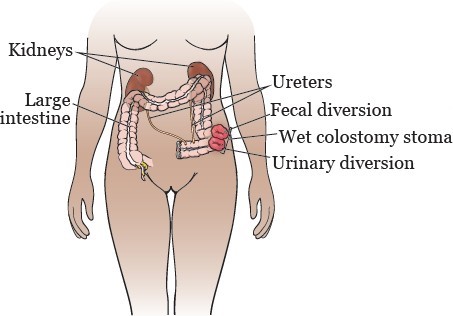A client with irritable bowel syndrome (IBS) is receiving dicyclomine, an anticholinergic drug. Prior to administering the next dose, the practical nurse (PN) determines that the client's mucous membranes are dry, and the client reports having a dry mouth. Which action should the PN take
Check vital signs.
Notify the charge nurse.
Monitor hemoglobin.
Provide oral care.
Observe and report any ear drainage after removing the device.
The Correct Answer is D
Dry mucous membranes and a dry mouth are common side effects of anticholinergic drugs like dicyclomine. These medications block the action of acetylcholine, a neurotransmitter responsible for stimulating secretions in the body. As a result, the client may experience dryness in various parts of the body, including the mouth.
Providing oral care, such as offering the client sips of water or providing a moistening agent for the mouth, can help alleviate the discomfort caused by dryness and promote oral hygiene. It is an appropriate and immediate intervention for the client's current symptoms.
Incorrect:
A. Checking vital signs may not directly address the client's dry mouth, but it is a good practice to assess the client's overall condition.
B. Monitoring hemoglobin would not be necessary in this situation, as it does not directly relate to the client's dry mucous membranes.
C. Notifying the charge nurse may be appropriate if the client's symptoms worsen or if there are other concerning factors, but the priority action in this case is to provide oral care to address the client's discomfort.
Nursing Test Bank
Naxlex Comprehensive Predictor Exams
Related Questions
Correct Answer is B
Explanation
the practical nurse (PN) should engage in regular contact with the client who demonstrates an inability to communicate effectively. Regular contact helps establish a therapeutic relationship and provides opportunities for observation and assessment of the client's needs and behavior. It also helps the PN to build trust with the client over time.
The other options listed are not appropriate methods for interacting with a client with psychosis who has difficulty communicating effectively:
A. Discouraging group activities: Group activities can be beneficial for individuals with psychosis as they provide opportunities for social interaction, skill-building, and support. It is important to encourage participation in appropriate group activities that are tailored to the client's needs and abilities.
C. Touching the client when speaking: Touching the client without their consent may be perceived as invasive or threatening, especially for individuals with psychosis who may already have difficulties with sensory processing or boundaries. It is important to respect the client's personal space and communicate through verbal means, maintaining a respectful and
non-intrusive approach.
D. Establishing a no-harm contract: No-harm contracts are typically used in the context of suicidal or self-harming behaviors to promote safety and identify support systems. While safety is important, it is not directly related to the communication difficulties associated with psychosis. Instead, the focus should be on developing a therapeutic relationship and finding effective means of communication with the client.
Correct Answer is C
Explanation
The client's question about whether the surgical opening will be visible suggests that they have concerns or misconceptions about the upcoming fecal diversion surgery. By reviewing the client's expectations of elimination after surgery, the PN can provide accurate information and address any anxieties or concerns the client may have.

The other options are not directly related to the client's question and are not the most appropriate actions to take in this situation:
A. Determining if this is the client's first indwelling catheter is unrelated to the client's question about the visibility of the surgical opening. It may be important to assess the client's history of urinary catheter use for other purposes, but it does not address the client's immediate concern.
B. Asking the client if they finished the bowel sterilization prescription is also unrelated to the visibility of the surgical opening. While bowel sterilization may be a part of the preoperative preparation for fecal diversion surgery, it does not address the client's questions and concerns.
D. Verifying that the client had nothing by mouth (NPO) for the past 24 hours is important for general preoperative care but does not address the client's specific question about the visibility of the surgical opening.
Whether you are a student looking to ace your exams or a practicing nurse seeking to enhance your expertise , our nursing education contents will empower you with the confidence and competence to make a difference in the lives of patients and become a respected leader in the healthcare field.
Visit Naxlex, invest in your future and unlock endless possibilities with our unparalleled nursing education contents today
Report Wrong Answer on the Current Question
Do you disagree with the answer? If yes, what is your expected answer? Explain.
Kindly be descriptive with the issue you are facing.
